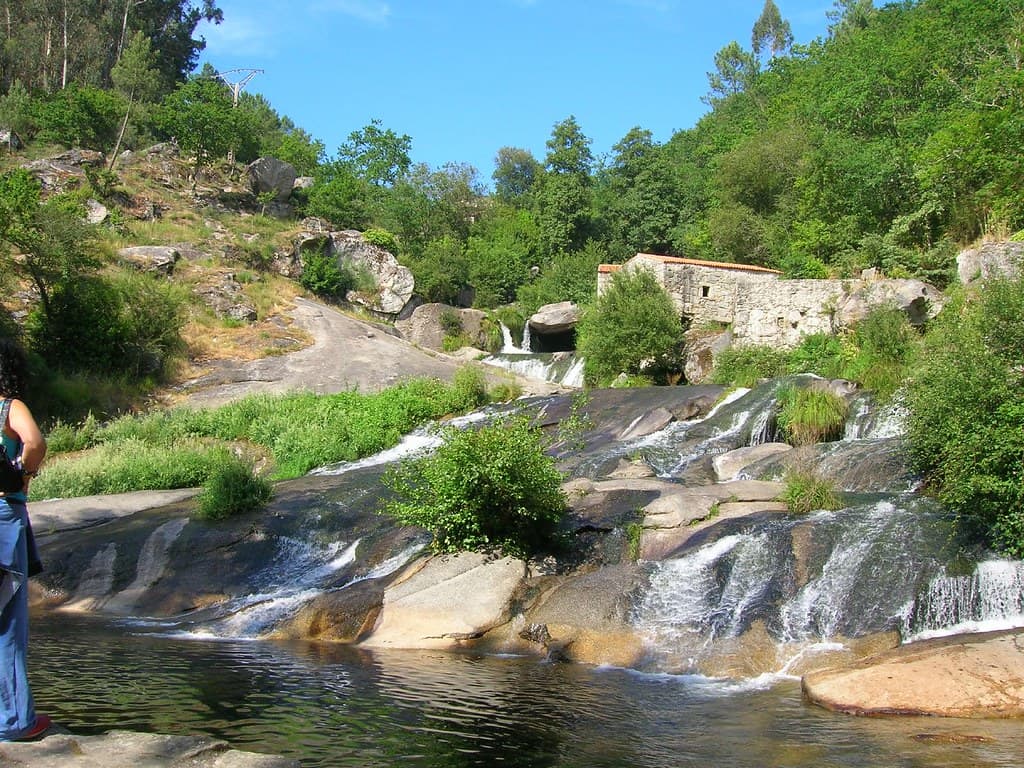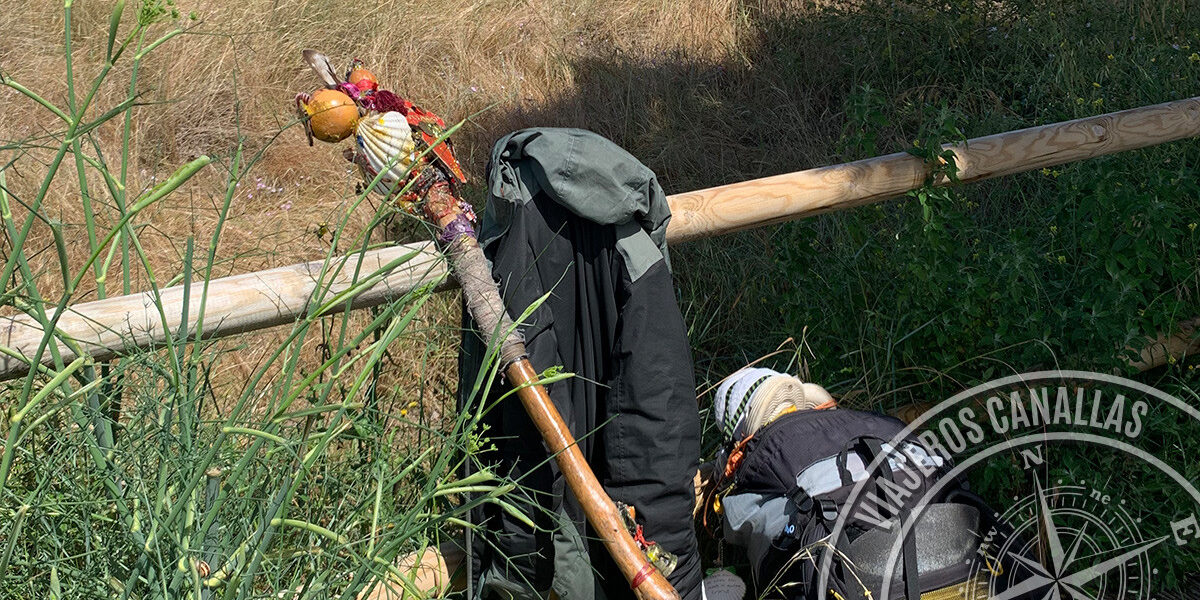1. Ramallosa (Nigrán)
Ramallosa is a small coastal village that combines traditional Galician houses with paths towards the mouth of the river Miñor, offering unique views of the estuary. Its tranquility contrasts with the proximity of the beach of Panxón, making pilgrims can enjoy a peaceful and picturesque stretch.
It is said that the mermaids once protected the fishermen who fished in the estuary, guiding them to port on foggy nights. As you walk through Ramallosa, it is impossible not to stop at the bridge over the Foz do Miñor and contemplate the landscape that has inspired generations of locals.
2. Cesantes (Redondela)
Cesantes maintains a seafaring air, with narrow streets and a rural charm that seems frozen in time. The Vigo estuary stretches out before the eyes of the pilgrim, and the small beaches and coastal areas invite you to contemplate the sea in silence.
The church of Santa María de Cesantes is an example of the local religious heritage and is well worth a brief visit. Legends tell of mysterious lights that appeared over the estuary to guide fishermen on foggy nights, and a stroll through its streets allows you to immerse yourself in Galicia at its most authentic.
The mussels and barnacles from the estuary are products that reflect the gastronomic identity of the town and should not be missed.
3. Arcade
Arcade is a small riverside village that combines tradition and nature, with the river Verdugo running through its heart and stone bridges that recall centuries of history.
This town is especially famous for its oysters, considered some of the best in Galicia, and its gastronomy attracts pilgrims and locals alike. Local legend has it that the crosses along the Camino protect walkers from the dangers of the river, and you can still feel that connection to history as you stroll through its quiet streets.
As well as enjoying the scenery and local produce, the viewpoints over the river offer the perfect respite to contemplate the estuary and the natural surroundings.
5. Briallos (Caldas de Reis)
Briallos is a small rural village surrounded by nature, where the paths invite you to discover the greenest Galicia.
The Atlantic forests and waterfalls of the Barosa River create a setting of great beauty that combines with the history of the area, reflected in the traditional crosses that dot the village. Legend has it that goblins protected these forests and waterfalls, a touch of mystery that adds to the magic of the walk.
Local products, such as cheeses and artisan honey, allow you to savour the authenticity of Briallos after a day's walk along its trails.

5. Pontecesures
Pontecesures is a riverside town that preserves the essence of seafaring Galicia. Its streets reflect traditional life and a riverside promenade allows you to approach the Arousa estuary, where sailing and fishing marked the history of the place.
The church of Santiago, the centre of the village, is witness to centuries of devotion and tradition. In the past, it was said that the waters of the estuary brought luck to the ships that passed in front of the village, a reminder of the close relationship between local life and the sea.
6. Caldas de Reis
Caldas de Reis combines historical heritage and nature. Its thermal baths and hot springs have been famous since Roman times, and the old town invites you to stroll through quiet streets and squares full of history.
The thermal waters are considered revitalising and its Roman bridge bears witness to the passing of the centuries.
7. Register
Padrón is famous for its literary and gastronomic tradition. Its ancient streets reflect the history of a town that has seen pilgrims pass through for centuries, and the church of Santiago is a must-see landmark.
This is where Padrón peppers take centre stage, small but full of flavour, a typical product that you can't miss. The legend of the apostle Santiago adds a mystical touch: it is said that he was taken from Jerusalem to Padrón, leaving his mark on local history and folklore.
Why travel through these villages with Travellers Scoundrels
Travelling through these villages with Viajeros Canallas allows you to enjoy 7 nights and 8 days of accommodation in selected hostels, with optional backpacking for light walking.
Each village offers its own essence, legends and local flavours, turning the experience into a journey through the most authentic and less touristy Galicia.
FAQs about the villages on the Portuguese Coastal Way
How much walking do you do per day on the Portuguese Way along the coast?
On the Portuguese Coastal Route, you will walk 124 km in 6 stages, from Baiona to Santiago de Compostela. The duration of this trip is 8 days and 7 nights.
Is it suitable for beginners?
Yes, it combines flat stretches and gentle climbs; basic fitness is sufficient. We recommend training by walking 4-5 km a day and doing some longer hikes before your trip.
Does the trip with Viajeros Canallas include an accompanying guide?
No, each pilgrim goes at their own pace. The Portuguese Way with us includes: 8 days/seven nights in private hostels in shared rooms, half board, the credential, the WhatsApp contact of your travel coordinator, our recommendations, the Canalla Guide to make the most of your experience and always a surprise!
Is backpack transport necessary to do the route?
It is not compulsory, Viajeros Canallas offers this optional service for those who prefer to walk lighter and enjoy the villages without carrying all their luggage.
How many meals are included in the Viajeros Canallas trip?
The price of the Camino includes half board, which consists of 6 dinners and 6 breakfasts plus dinner in Santiago de Compostela on the day of arrival.
